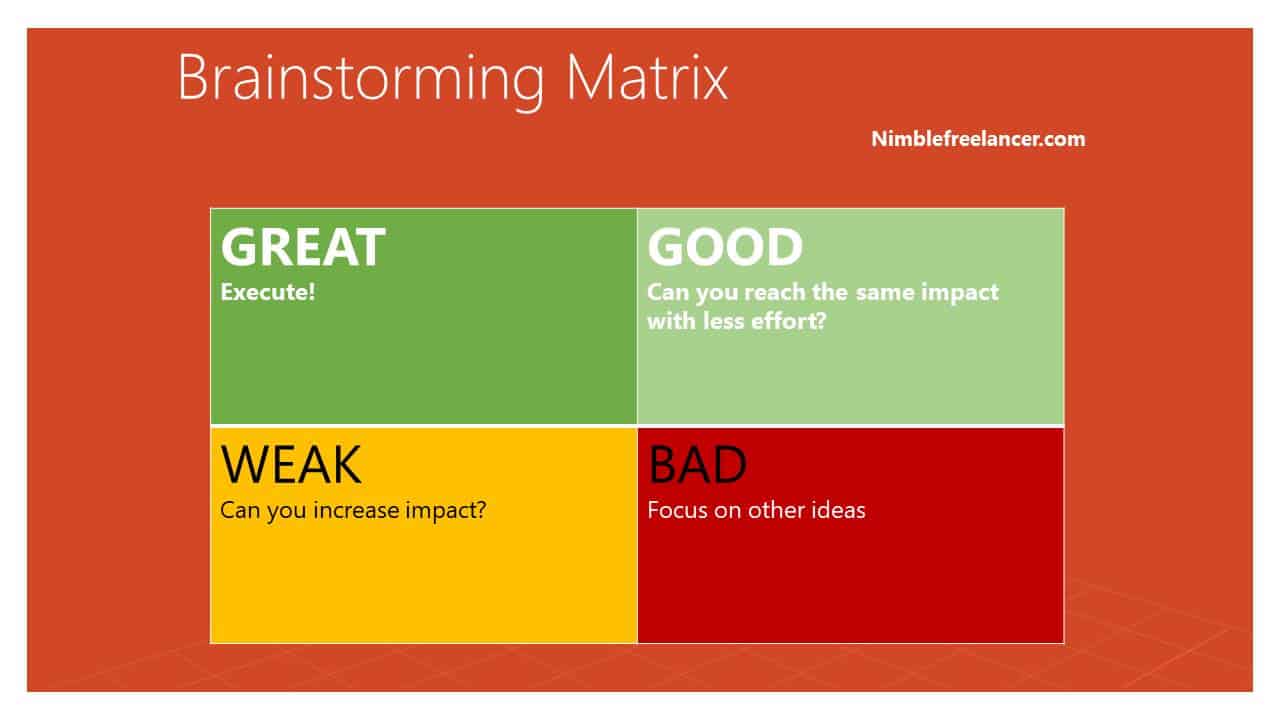Generating ideas before the application can be a tricky and complex process. One must be fully mindful and aware of one’s surroundings to garner all one’s ideas and thoughts. This is usually required before implementing certain principles, theories, and concepts in written essays, project-based work, independent analysis, or research. Scribbling ideas or brainstorming might be monotonous, especially for academic goers. Gathering ideas for a specific topic or a subject back in school is probably the minor favorite student task.
What is brainstorming?
Brainstorming is a tactical approach to generating ideas to solve clearly defined problems. It is an informal technique for problem-solving with imaginative thinking. This allows individuals to be released from an issue they had been stuck with for too long. In other words, it is a brilliant idea with a creative character that can happen individually or in a group. Different solutions for a simple or a complex scenario are placed on the table, which can be later accepted or rejected. The participants reveal ideas as potential solutions for a specific solution that appears to be impossible. The brainstorming process stimulates the human mind toward a creative problem-solving technique.
The five rules of brainstorming are:
- There are No Dumb Ideas
- Do not Criticize Other PePeople’sdeas during brainstorming.
- Reverse Quality for Quantity – Quantity over quality
- Build on Other PePeople’sdeas
- Play Wildly and Connect the dots
There are no dumb ideas, and the best way to approach all ideas is from a position of acceptance.
Why is brainstorming important?
Brainstorming is important because it allows people to think more freely without fear of judgment. It encourages open and ongoing collaboration to solve problems, generate innovative ideas, and improve critical thinking and problem-solving skills as an individual and a team.
Without effective brainstorming, new ideas are impossible to generate. The team communicates and passes ideas to one another for effective problem-solving. Thoughts are generated within the human mind, unleashing individual creativity, and then noted down in a concrete form to pursue their application. Mostly, it takes place on a group level, especially in the business world.
A group is addressed together and exposed to a problem, challenge, or opportunity. Later, the facilitator can ask the group members to come up with plenty of solutions, no matter how bizarre and unconventional they may seem. During this period, different participants interact with each other and develop new solutions that are later reviewed. After a thorough analysis of all the solutions, select the most viable one that can solve the current crisis. This can be concluded with plans to implement the most exciting idea. This may sound like a great plan, but it may take up a lot of energy and might not be that simple at all.
Questions to ask yourself when brainstorming:
Brainstorming enables people to think independently without the fear of being judged. It also encourages open discussion and collaboration with other members and emphasizes teamwork. Ideas can also be merged to create a customized solution, which can only be possible when multiple innovative ideas are combined. It allows the team to reach a consensus, leading to a well-established answer. It encourages different perspectives and allows working with out-of-the-box unconventional ideas. It is excellent for team building and cooperation as it has no ownership to a single member; instead, it is a collective effort on a large scale level. Participants learn to be more patient while waiting for their turn and give answers in an organized and structured way, removing the haphazardness in a team scenario.
Mostly, brainstorming sessions are productive and create a valuable strategy to tackle the issue. However, there are scenarios where brainstorming meetings can go wrong. If there is a mismatch and imbalance in the group where the extroverts and dominant personalities outweigh the quiet thinkers, there would be no equal distribution in idea generation. Everyone should be allocated ample time to think and speak up. In some cases, participants are less prepared with no mental notes. This type of meeting is undoubtedly an unproductive one.

Adopting the following strategies will help the team foster brainstorming through discussions, critique, and selection.
Write within your brain.
Use the most powerful tool you have, which is the brain. This involves a nonverbal brainstorming method, and everyone writes down creative ideas within the brain to be presented later. The brainstorming process usually involves 5 to 6 minutes, and then different ideas for different perceptions are considered and thoroughly scrutinized. This process consists in incorporating quick ideas that came to mind the first time the problem was presented.
Quantity over quality
This approach means that more participants will eventually develop several solutions. There are no limitations to brainstorming, and this process is usually accepting of all sorts of ideas. These ideas are then merged to form a conclusion or a solution, no matter how unrealistic or irrelevant they might sound, as they are equally important. The aim is to create a large pool of ideas later gathered to form a strategy.
Connect the dots
Once everyone in the group has been presented with the opportunity to contribute suggestions, base the group discussion on other people’s ideas ideas and connect them for a valuable and significant solution. Connecting and building with other people is the most critical pillar of the brainstorming technique. This involves encouragement from all the participants, and the role of the group facilitator is to bridge the differences and even the similarities among opinions. The primary focus of Tmethod’s is to reach a consensus or come up with a viable solution to a problem affecting everyone. Brainstorming is a less formal approach; therefore, it welcomes creativity, has some fun, ignores personal preferences, and allows everyone to speak up.
Brainstorming is a healthy technique for idea generation and accumulation. It is an alternative to come up with possibilities to develop creative approaches. It unlocks creativity through collaboration and teamwork. It is an ideal technique to come together as a team and help achieve a single goal to take a business or a company and even informal discussions to a new level. Powerful insights can be achieved if a proper and constructive process is used. Successful brainstorming can render an endless pool of efficient and constructive ideas and may solve a problem with fewer complications and flaws than another way.





